Types of Loads for Design of Bridge Structures
Important Point
Here, the different types of load impacted in the bridge are as follows.
- Dead load
- Superimposed Dead Load
- Live load
- Impact load
- Wind load
- Channel Forces
- Longitudinal forces
- Centrifugal forces
- Differential settlement
- Shrinkage and creep
- Earth pressure
- Buoyancy effect
- Effect of water current
- Thermal stresses
- Seismic loads
- Deformation and horizontal effects.
- Erection stresses
- Prestress
1. Dead Load
The self-weight of the bridge components, often referred to as what is the dead load of a bridge or dead load bridge, is represented by the dead load. The deck slab, wearing coat, railings, parapet, stiffeners, and other utilities are among the bridge’s different components.
It is considered the initial computable design load when constructing a bridge design.
2. Superimposed Dead Load
Other permanent objects such as parapets and road pavement, also known as superimposed load or superimposed dead load examples, are called superimposed dead loads. These things are long-term, though they may be replaced during the structure’s lifetime.
It is determined as the product of volume and material density, just like self-weight.
Useful Article for You
- What Is a Contour Interval
- What Is Tile
- What Is the Difference Between a Shower Pan and a Shower Base?
- What Is a Window Panel
- Type of Arch
- What Is the Measurement for a Queen Size Bed
- What Is Considered Livable Space
- What Is One Way You Can Save Electricity?
- What Is Mdf Mean
- What Is a Bundle of Shingles
- What Is a Gallon of Water Weigh
- What Is Sand Blasting
- What Is a Span Bridge
- What Is the Little Black Diamond on a Tape Measure
- What Is a Louvered Door
- What Is a Spread Footing
- What Is Leveling
- Different Types of Beam
- What Is Pedestal
- What Is Plumbing Fixtures
- What Is Slab Construction
- What Is Calacatta Quartz
- What Is Auxiliary View
- Sheepsfoot Roller
- What Is 1 Flight of Stairs
- What Is Refractory Cement
- Dry Pack Concrete
- What Is Luminous Flux Vs Lumens
- What Is a Frost Wall
- What Is an Undercoat
- What Is Road Pavement
- Arch Foundation
- What Is a Stair Landing
- What Is Stone Masonry
- What Is a Spandrel Beam
- What Is Pier and Beam Foundation
- What Is a Pile Cap
- What Is a Mat Foundation
- What Is a Floating Slab
- What Is the Purpose of Foundation
- What Is Modulus of Rupture
- What Is a Flush Door
- What Is Residential Construction
- What Is the Best Foundation for a House
- What Is a Benchmark in Surveying
- What Is a Engineering Drawing
- What Is an Admixture
- What Is a Monolithic Slab Foundation
- What Is the Standard Size Water Supply Line
- What Is the Difference Between Tension and Compression?
- What Is a Tremie
- What Is Tributary Area
- What Is Shoring Construction
- What Is a Cason
- What Is Wall Putty
- What Is the Difference Between Mortar and Concrete
- What Is Bhk
- What Is Sbc of Soil
- What Is Plinth Level
- What Is Water Proofing
- What Is Mix Design of Concrete
- What Is Fine Aggregate
- What Is Retention Money
- What Is Design Mix
- What Is Isometric Scale
- What Is Development Length
- What Is Superelevation
- What Is Wall Made Of
- What Is Micro Piling
- What Is Soil Stack
- What Is a Half Wall Called
- What Is Flagstone
- What Is a Cinder Block
- What Is Floors
- What Is a Parapet in Construction
- What Is Concept Drawing
- What Is a 30 Degree Angle
- What Is a Mezzanine Level
- What Is Plinth Area
- What Is Precipitation
- What Is a Soffit
- What Is the Difference Between Residual and Transported Soil
- What Is a Drop Manhole
- What Is Oblique View
- What Is a Flyover Bridge
- What Is Tie Beam
- What Is the Cost of 1 Bag Cement
- What Is Well Foundation
- What Is the Principle of Chain Surveying
- What Is Dlc in Road Construction
- What Are the Advantages of Levelling
- What Is Hardened Concrete
- What Is Plinth Protection
- What Is Wbm Road
3. Live Load
The moving load on the bridge, a key component of types of loads on bridges and loads on a bridge, corresponds to the live load the entire length of the bridge.
Vehicles, pedestrians, and other moving loads are examples. Selecting one vehicle or a group of vehicles to construct a safe bridge is difficult.
In anticipation of any form of vehicle moving on the bridge, IRC proposed some fictional cars as live loads, which will provide secure outcomes.
The following are the several types of vehicle loadings:
- IRC class AA loading.
- IRC class A loading.
- IRC class B loading.
3.1 IRC Class Aa Loading
This form of loading can be used to design new bridges, especially those with heavy loads, such as highway bridges, city bridges, and industrial bridges. Normally, the following sorts of vehicles are taken into account when loading a class AA vehicle.
- Tracked type
- Wheeled type
3.2 IRC Class A Loading
All permanent bridges must be designed with this type of loading in mind. It is handled as a conventional bridge live load. When designing a bridge for class AA loading, it should also be checked for class A loading.
3.3 IRC Class B Loading
This sort of loading is used to create temporary bridges such as Timber Bridges. It’s considered a light load.
4. Impact Loads
These sudden loads, part of the 7 types of loads on bridges, generated as the vehicle is travelling on the bridge, induce the impact load on the bridge.
Whenever the wheel is in movement, the live weight shifts from one wheel to the next, causing the impact load on the bridge.
An impact factor is used to calculate the impact loads on bridges. The impact factor is a multiplication factor that’s also depending on numerous elements such as vehicle weight, bridge span, vehicle velocity, and so on.
5. Wind Loads
The wind load, an important aspect of bridge loads, is also a significant consideration in bridge design. Wind load on short-span bridges can be insignificant. For medium-span bridges, wind loads should be taken into account while designing the substructure.
Wind load is taken into account when designing superstructures for long span bridges. The surface areas of all elements (including superstructure and substructure) as seen in elevation are considered the exposed zone of the bridge (i.e., perpendicular to the longitudinal axis).
AASHTO specifies the loading on a bridge due to wind forces based on a wind velocity of (160 km/h). This translates to an intensity of (2.40 kN/m2 ) for standard girder/beam bridges, with a minimum total force of (4.38 KN/m).
5.1 Wind Load on Structure
- Transverse Loading = (2.40 kN/m2 ).
- Longitudinal Loading = (0.58 kN/m2 ).
5.2 Wind Load on Live Load
- Transverse Loading = (1.46 kN/m) .
- Longitudinal Loading = (0.58 kN/m).
Also, read: What Is Workability of Concrete | Factors Affecting Workability | Test |Errors
6. Channel Forces
The loads exerted on a structure by water course-related features are known as channel forces. Stream movement, floating ice, and buoyancy are only a few examples of these forces. Substructure elements are predominantly affected by channel forces, which are equivalent to seismic forces.
7. Longitudinal Forces
Braking or accelerating a vehicle on the bridge causes longitudinal forces, addressing the question of which type of load is every bridge designed to carry. When a vehicle comes to an abrupt stop or accelerates, longitudinal forces are applied to the bridge structure, particularly the substructure. As a result, the IRC advises that 20 percent of the live load be treated as longitudinal force on bridges.
The longitudinal force is exerted above the deck surface (1.8 m). The assumption is that all travel lanes are travelling in the same direction. The influence of longitudinal forces (breaking force) on the superstructure is minor.
Substructure elements, on the other hand, are more severely damaged. The breaking force, like longitudinal earthquake forces, is resisted by the piers and/or abutments that support fixed bearings.
8. Centrifugal Forces
The movement of vehicles over curves, a load bridge consideration, will create centrifugal force on the superstructure if the bridge is built on horizontal curves.
As a result, in this scenario, centrifugal forces should be considered as well. Centrifugal force can be calculated by
C = ( W xV 2 ) / (12.7 R )
Where,
- W = live load ( kN )
- V = Design speed ( kmph )
- R = Radius of curve (m).
The truck loading is used to calculate centrifugal forces rather than the lane loading.
In each design traffic lane, one standard design truck is put to generate maximum forces in the bridge.
Decks attached to the primary members of the superstructure (for example, a composite concrete deck integrated with steel girders using shear connectors) transmit centrifugal forces to substructure elements via secondary components and bearings at piers and abutments.
Also, read: What is Plum Concrete | Application | Mix Design | Methodology
9. Differential Settlement
In the case of continuous and simply supported bridges, support settlement causes additional design moments in the superstructure. The quantity of settlement determines the force intensity.
10. Shrinkage and Creep
Concrete beams that were pre-stressed showed signs of shrinkage and creep. This distortion may have an impact on bridge design. Furthermore, when considering the composite action of bridges, cast in-situ concrete set on a specific beam subjected to shrinkage comes into play.
It adds to the stress level. It will be necessary to detail reinforcements in order to avoid this consequence.
Also, read: Curing In Construction | Concrete Cure Time | Methods of curing
11. Earth Pressure
The typical method of applying earth pressure to the bridge can be used. Surcharged loads must be considered for the design based on the location.
Coulomb’s method or any other applicable approach could be used to compute active, at rest, and passive pressure coefficients.
12. Buoyancy Effect
The buoyancy impact is taken into account for huge bridge substructures submerged in deep water. If the depth of submersion is low, the effect may be insignificant.
Bridges with submerged underwater components (e.g., piers) are susceptible to the effects of buoyancy. This is usually just an issue with very big hollow constructions.
On pier footings and piles, buoyancy may provide an uplifting force.
13. Effect of Water Current
When constructing a bridge across a river, a portion of the foundation will be submerged in water. Horizontal forces are induced by the water movement on the submerged section.
Water current forces are greatest at the top of the water level and zero at the bottom of the water level, or at the bed level.
The pressure by water current ( P ) = KW [V2/2g]
Where
- P = pressure ( kN/m2)
- K = constant (value depending upon shape of pier)
- W = unit weight of water
- V = water current velocity (m/s)
- G = acceleration due to gravity (m/s2)
Useful Article for You
- Zero Force Members
- How Much Does a Yard of Concrete Weigh
- Cmu Wall Meaning
- Gradient Road
- Budget Sunroom Ideas
- What Is Gypsum Board
- Types of Vaulted Ceilings
- Well Points
- How Does Baking Soda Remove Blood from Carpet
- What Are Forms in Construction
- How Heavy Is Dirt
- Tender Meaning in Architecture
- Dark Olive Green House
- Cast in Place Concrete
- Lean to Roof
- How Tall Is an Average Door
- Grade Beam Foundation
- Window Sill Height
- Concrete Cold Joint
- Types of Traps
- Types of Pipe
- Wood Supporting Beams
- Finishing Plaster
- Home Depot Scrap Wood
- Lvl Beam Size Calculator
- Structural Shell
- Curb Types
- Msand
- Optimum Dry Meaning
- Disadvantages of Low-E Glass
- Bridge Abutment Definition
- Build Materials List
- Composite Masonry Wall
- Is Cedar a Hardwood or Softwood
- Modified Proctor Test
- Physical Properties of Sand
- Crane Machine Construction
- Types of Gable Roofs
- Door Frame Types
- How Much Does 55 Gallons of Oil Weigh
- Dog Leg Stairs
- Concrete Salt Finish
- Westpoint Bridge Builders
- Types of Porches
- Hempcrete Disadvantages
- Roof Pitch Types
- Types of Weirs
- Asphalt Floor
- Dutch Roof
- #6 Rebar Weight Per Foot
- Prizmatic Compass
- Bond Break Concrete
- Poured Concrete Wall Cost Calculator
- How Many 60 Lb Bags of Concrete in a Yard
- Wood Fence Post Spacing Chart
- Falsework
- Design of Building Structures
- Topping Slab
- Types of Cinder Blocks
- Fresh Concrete
- Door Colors for Red Brick House
- Clear Cover Concrete
- Tiles Brand
- Cement Consumption in Plaster
- Aggregate Density Kg M3
- Weight of Concrete Slab Calculator
- Is Clay Smaller Than Silt
- How to Calculate Dead Load
- Bad Concrete Work
- Stepped Foundations
- Residential Construction Cost Estimator Excel
- Different Construction Trucks
- Septic Pump Replacement Cost
- Dead Load Calculator
- Beam Vs Column
- Concrete Mix Ratio
- Caisson Foundation
- Glulam Beam Weight Calculator
- Bituminous Pavement
- M30 Mix Ratio
- Is 2502
- Reinforced Brick Work
- Plinth Level
- Trapezoidal Footing Formula
- Slab Steel Calculation
- Rolling Margin of Steel
14. Thermal Stresses
The temperature causes thermal stresses. Extremely high or low temperatures cause stresses in bridge elements, particularly around bearings and deck joints.
Because these strains are tensile in nature, concrete is unable to withstand them and cracks emerge.
Additional steel reinforcement perpendicular to the primary reinforcement should be installed to resist this. There are also expansion joints available.
15. Seismic Loads
When constructing a class a bridge in a seismic zone or earthquake zone, earthquake loads must be taken into account. During an earthquake, they produce both vertical and horizontal stresses. The amount of force applied is mostly determined by the structure’s self-weight.
Larger forces will be exerted if the structure’s weight is greater. Seismic forces are a significant loading factor that frequently influences bridge design in seismically active areas. The acceleration coefficient at the bridge site is used to determine the degree of seismic activity.
Structures with only an acceleration coefficient higher than 0.19 are thought to be in a seismically active location. These coefficient, as well as whether or not its bridge is categorised as essential, are being used to provide a seismic performance category to the bridge (SPC).
16. Deformation and Horizontal Effects
Changes in material characteristics, either internally or externally, cause deformation stresses. Creep, concrete shrinkage, and other factors could cause the change.
Temperature fluctuations, vehicle brakes, earthquakes, and other factors will all produce horizontal forces. As a result, in bridge design, these are also considered design loads.
Also, read: What Is FSI | What Is FAR | What Is Premium FSI | FSI Full Form | FAR Full Form
17. Erection Stresses
During the construction of a bridge, construction machinery causes erection tension. These can be thwarted by offering appropriate support to the members.
18. Prestress
While prestress is more of a means of resisting load than a loading, it is often more convenient to treat it as such for analytic purposes. The approach of equivalent loads can be used to deal with prestress, just as it can with temperature.
Bridge Structures
There Are Six Basic Bridge Forms: the Beam, the Truss, the Arch, the Suspension, the Cantilever, and the Cable-Stay.
Wooden Arch Bridge
Sit stable. And line them up this way for the birth. Okay that’s the hud spike down okay so now that i have these holes in the next part is to get the baseboards in on either side here.
Metal Truss Bridge
Steel truss bridge. A steel truss bridge is a bridge composed of only trusses. If the span of the bridge is too large, there is a disadvantage that it takes a lot of time to manufacture the members, but it is a representative railroad bridge that has the advantage of having light members and it is easy to construct.
Prefabricated Pedestrian Bridges
The federal highway administration estimates that pedestrian bridges range from $150 to $250 per square foot, totaling a cost of approximately $1 million to $5 million per complete installation.
Steel Bridge Truss
Steel truss bridge. A steel truss bridge is a bridge composed of only trusses. If the span of the bridge is too large, there is a disadvantage that it takes a lot of time to manufacture the members, but it is a representative railroad bridge that has the advantage of having light members and it is easy to construct.
Prefabricated Bridges Residential
The cost is $120 to $160/square foot for bridges with simple precast abutments. Small precast prestressed concrete girder bridges with integral decks come in a variety of configurations. Girder types include flat slabs, void decks, rib decks, deck bulb-tee girders, and others.
Bridge Joists
The term ‘bridging’ refers to a brace, or an arrangement of braces, that is fixed between floor or roof joists to keep them in place, prevent joist rotation, and distributing loads over more than one joist.
Bridging can help strengthen a floor and stop it from bouncing when occupants walk across it.
Beam Bridge
A beam or “girder” bridge is the simplest and most inexpensive kind of bridge. In its most basic form, a beam bridge consists of a horizontal beam that is supported at each end by piers. The weight of the beam pushes straight down on the piers.
Truss Bridge Designs
In this experiment we have tested which type of truss bridge is the strongest, yet uses the least amount of material. Two of the most used truss bridges are of the pratt and howe design. Through our experiment it was found that the bridge design that minimized the maximum compression force was the howe bridge.
Steel Truss Pedestrian Bridge
As a general rule, the truss depth should be no less than 1/20th of the bridge span but — except in extreme cases — shall not be less than 1/25th of the bridge span.
Like this post? Share it with your friends!
Suggested Read –
- Example of Dead Load
- Top 10 Best Cement Companies In India 2021
- Difference Between 33, 43 and 53 Grade Cement
- What Is a Field Dry Density Test | Different Type of Field Density Tests
- What Is Slump Cone Test | Principle of Slump Test | Types of Concrete Slump
- Dog-Legged Staircase | What Is Staircase | Advantages & Disadvantage of Dog-Legged Staircase
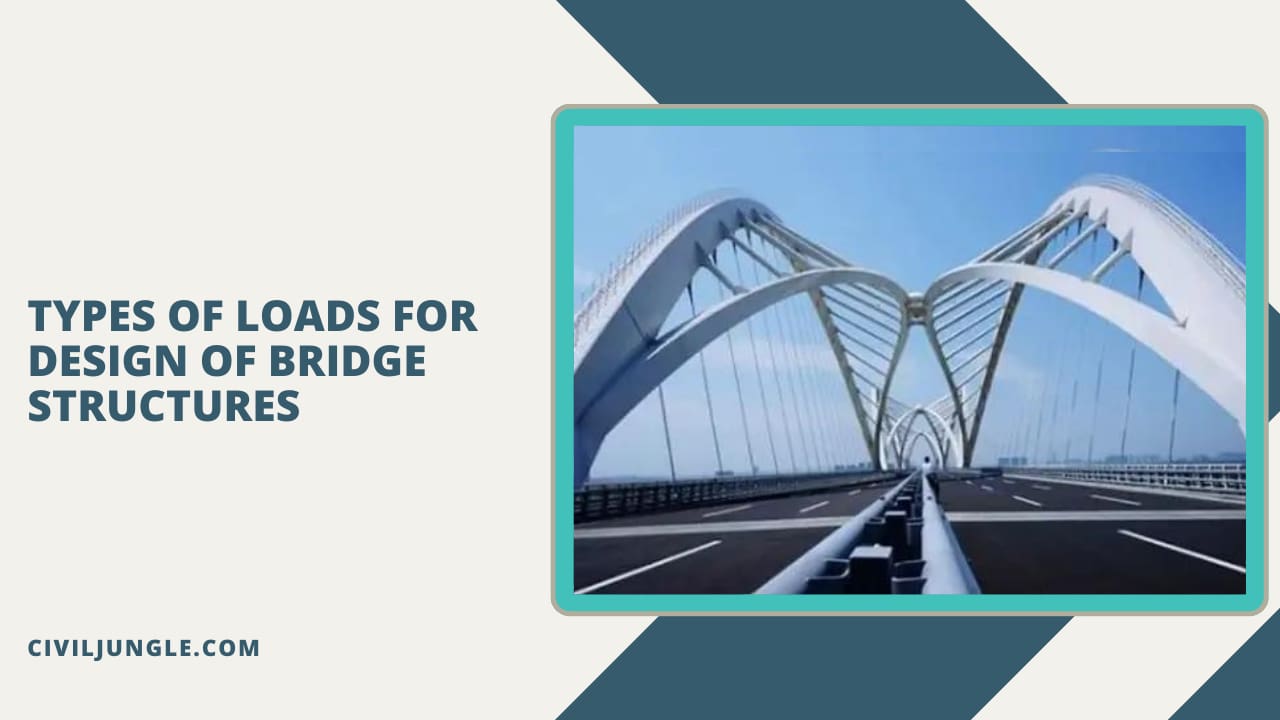
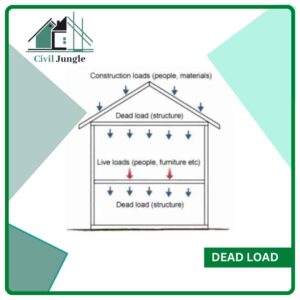
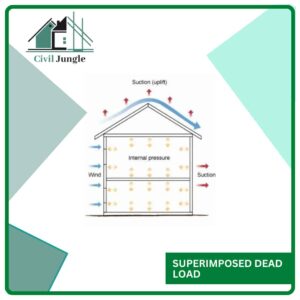

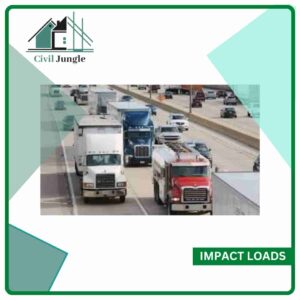
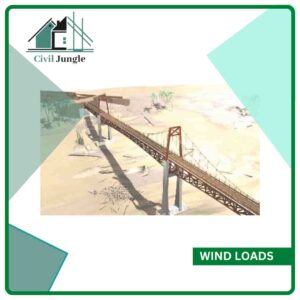
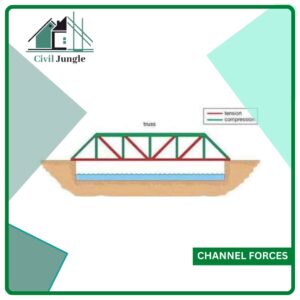
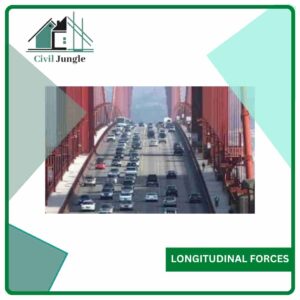

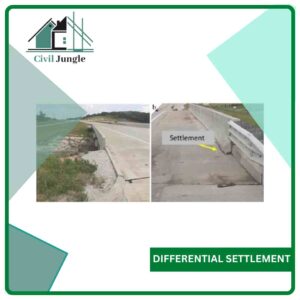
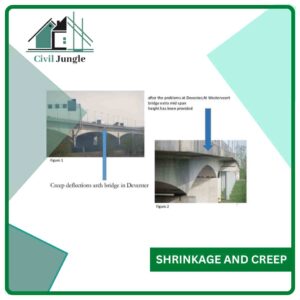
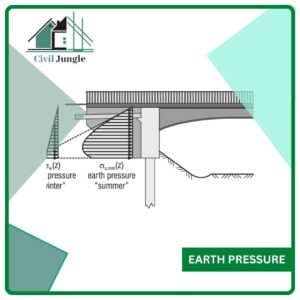
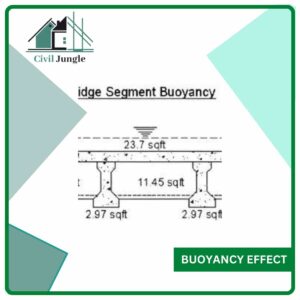
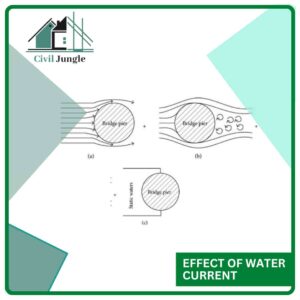

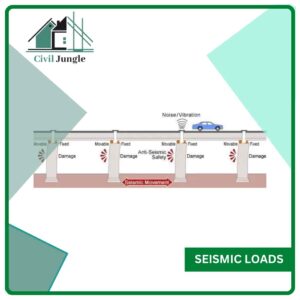
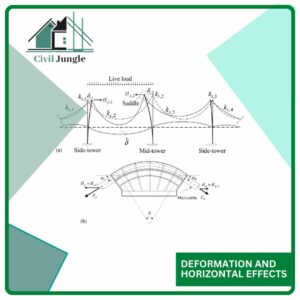
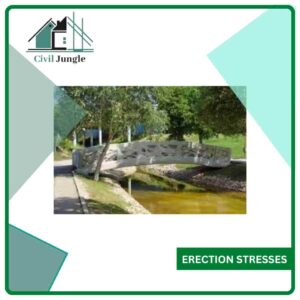
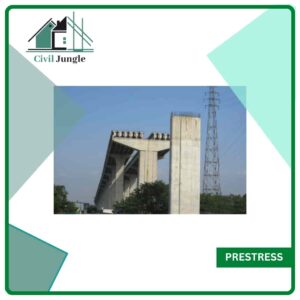

Leave a Reply